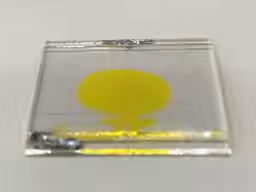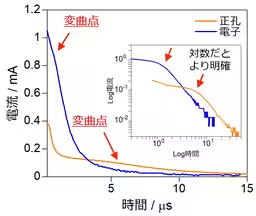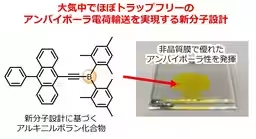

New Ambipolar Organic Semiconductor Developed for Enhanced Stability in Electronic Devices
Introduction
A collaborative effort between the Tokyo Institute of Industrial Science and Technology (Tokyo Institute) and Tokyo University of Science is making waves in the field of organic electronics with the development of a cutting-edge ambipolar organic semiconductor. This material exhibits impressive stability and transport characteristics even when exposed to atmospheric conditions, addressing long-standing issues in the synthesis and performance of wide bandgap organic semiconductors.
The Challenge of Traditional Organic Semiconductors
Historically, ambipolar organic semiconductors have posed significant challenges. They are often difficult to synthesize and suffer from severe degradation in charge transport properties following atmospheric exposure. The need for improvement in the synthesis processes and stability of these materials has never been more critical, especially for applications in visible light electronics.
Breakthrough Development
The newly developed semiconductor boasts a wide bandgap design that allows both electrons and holes to be transported efficiently. This device is notable for its ease of synthesis—achievable in just three steps from commercially available raw materials, resulting in a high yield of approximately 66%. Its exceptional properties include:
- - Energy Levels: The Highest Occupied Molecular Orbital (HOMO) level is at -5.6 eV, while the Lowest Unoccupied Molecular Orbital (LUMO) level sits at -3.0 eV. This wide bandgap of 2.6 eV allows for effective electronic performance.
- - Uniform Amorphous Films: The semiconductor can be applied in the form of an even amorphous film, which exhibits a glass transition temperature of 79 °C, making it suitable for a range of device applications.
- - Charge Transport Stability: The amorphous film maintains nearly trap-free ambipolar charge transport characteristics for over 12 hours after being exposed to air, significantly outperforming conventional materials.
Research Publication and Recognition
The results of this groundbreaking work are detailed in the upcoming publication in ACS Materials Letters, which is set to release its online edition on May 12, 2025. The paper, titled An Ambipolar Alkynylborane Compound with Nearly Trap-Free Charge-Carrier Transport under Ambient Air Conditions, features contributions from notable researchers, including Kentaro Mishiba and Akihiro Nagata from Tokyo Institute, alongside Yuya Tanaka and Hiroaki Iino from Tokyo University of Science. The article has also been selected as the Supplementary Cover for the issue, highlighting its significance in the field.
DOI Reference
For further details, refer to the DOI: 10.1021/acsmaterialslett.5c00288
Future Prospects
To translate this technology into commercial products, Tokyo Institute is seeking partnerships with companies interested in joint research and development programs. This initiative aims to advance the application of this ambipolar organic semiconductor in real-world electronic devices, thereby improving their stability and design flexibility.
If your organization is interested in collaborating or learning more about this technology, please reach out to the Tokyo Institute for further information. This development represents a significant step forward in organic electronics, paving the way for innovative applications across various fields.
Related Patents
The advancement is protected under Patent No. 7372652, ensuring the proprietary nature of this research and its potential applications in the market.
Conclusion
The emergence of this new ambipolar organic semiconductor has the potential to revolutionize electronic devices by enhancing their stability and performance under everyday conditions. As research continues, the collaboration between academic institutions and industry partners will be vital in bringing these innovations to fruition, ultimately impacting various applications in the tech world.





Topics Consumer Technology)










【About Using Articles】
You can freely use the title and article content by linking to the page where the article is posted.
※ Images cannot be used.
【About Links】
Links are free to use.